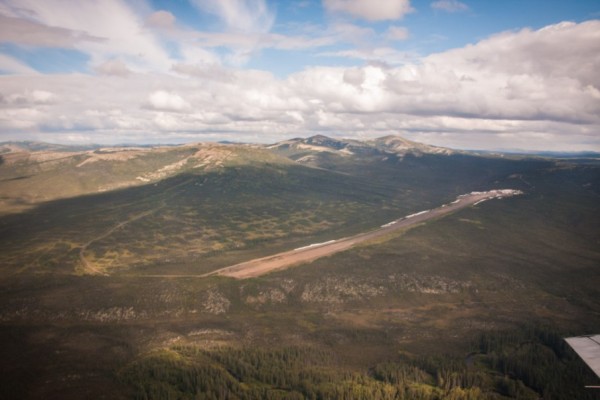
Two federal agencies have come to different conclusions on the potential effects the proposed Donlin Creek mine could have on subsistence along the Kuskokwim River. The site sits 10 miles north of the village of Crooked Creek. Donlin estimates it could excavate 34 million ounces of gold over almost three decades.
The Army Corps of Engineers predicts the mine would have a minor to moderate impact on subsistence practices and resources.
“Minor are impacts that tend to be low intensity, temporary duration, and local in extent typically to common resources that may experience more intense longer-term impacts,” said Keith Gordon, Army Corps Project Manager for the Donlin project. Moderate impacts are just greater than minor, but can be of any intensity or duration. The rating scale runs across five categories from no effect to major impacts.
On the other hand, Alan Bittner, field manager for the Bureau of Land Management, said the bureau has a different take.
“When we looked at all three major components of the project, it seemed like there was significant potential for subsistence resources to be affected,” Bittner said.
Those big components include the mine itself, barging on the Kuskokwim River, and a natural gas pipeline running over 300 miles from Cook Inlet to the mine site.
“Simply put,” Bittner said, “this is a pretty big project. There’s big components to it, and our finding is that the possibility exists in any of those major components to affect subsistence resources.”
The Army Corps contracted the environmental and engineering firm AECOM to create the mine’s draft environmental impact statement. The firm is operating under NEPA, the National Environmental Policy Act, while the BLM is working under ANILCA, the Alaska National Interest Lands Conservation Act.
Bittner said the agencies’ differing predictions come from different biologists working under different federal laws with different standards.
“A biologists from AECOM may feel one way and is working under a certain law and certain guidance of that law. And then, there’s a professional biologist on the BLM side working under a different law and drawing their preliminary conclusions as well,” Bittner said.
The Army Corp is the lead federal agency creating the EIS. The BLM is a cooperative agency, which got involved when Donlin applied for a right-of-way permit for a natural gas pipeline and a fiber optic cable stretching across BLM property. Now the BLM has to analyze the subsistence impact for the entire project, not just the pipeline path, and the bureau can declare one of two options.
“Either that the project will not significantly affect subsistence resources, or that it may significantly affect subsistence resources,” Bittner said.
What the BLM means by ‘significant’ is not well defined.
“It becomes a professional judgment on professional biologists who are writing about subsistence impacts as to what ‘significant’ is,” Bittner said. “Again, this is a preliminary finding that that potential exists.”
To make their final judgment, the BLM is predicting if subsistence resources themselves and access to those resources will be affected.
To help the BLM make this analysis, Bittner said the bureau is collecting public testimony in communities where the BLM determines subsistence resources could be affected by the proposed mine.
“So our preliminary finding is that it may [be affected], and we need to hear from people about whether that’s true for them or not— the individuals who are actually in the communities and subsistence is a part of their life,” Bittner said.
The Army Corps is also collecting input and has to respond to every comment relevant to NEPA. To make a comment relevant, Gordon said a responder has to go beyond saying whether or not they support the project to pointing out data gaps and presenting alternative solutions.
“And if they can give us some of those reasons, give us some information about why we need to do more, that gives us something we can look back at and determine if the analysis needs to go to a deeper level or needs to be expanded,” Gordon said.
The BLM will be holding a public hearing to collect such comments tonight in Bethel at 6 p.m. at the Cultural Center. More meetings are scheduled in Kuskokwim communities throughout the month. Comments can also be submitted online
Anna Rose MacArthur is a reporter at KYUK in Bethel.




